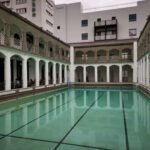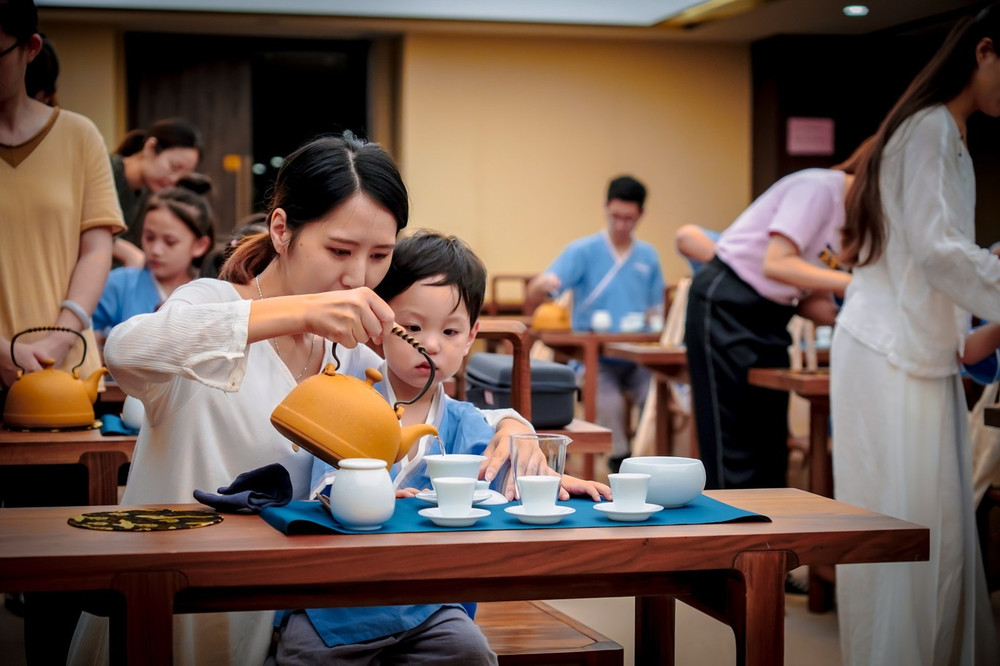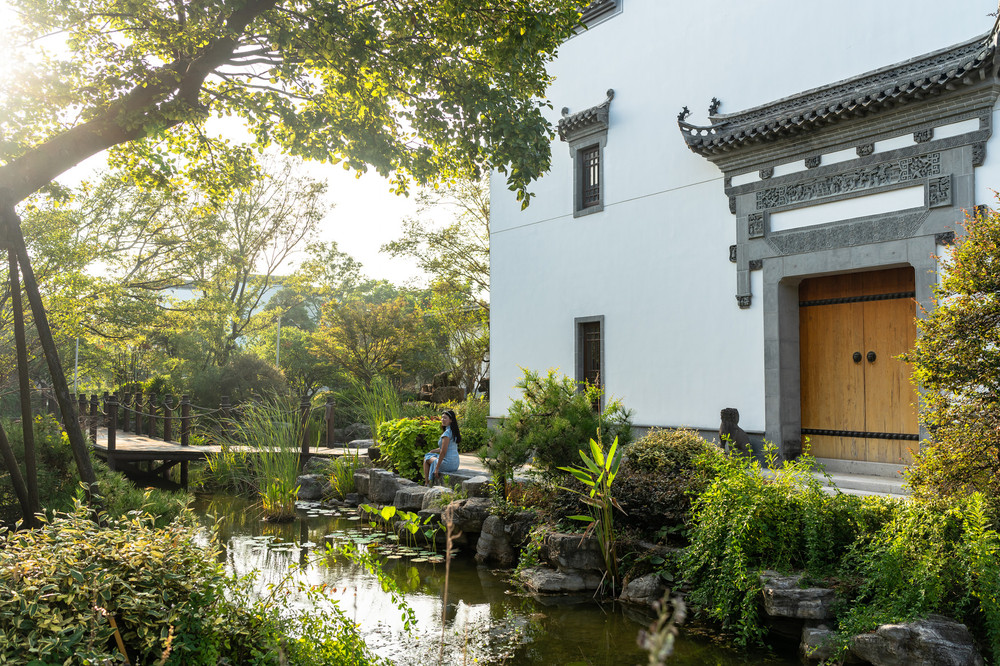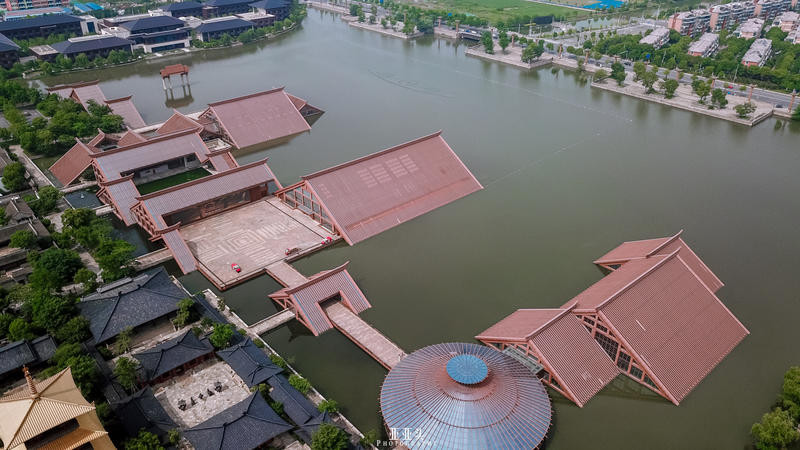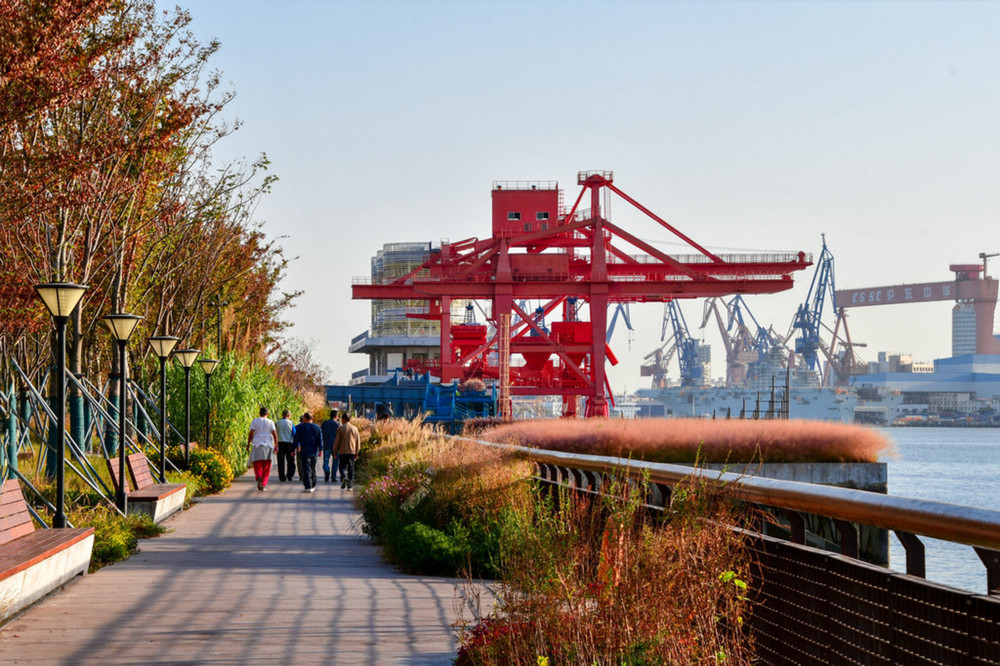**Duration: 120 Days**
**Time: October**
**Average Cost per Person: 75,000 Yuan**
**Companions: Spouse**
**Travel Style: Cultural and Free-spirited**

Published on February 24, 2022, at 12:07 PM
This morning at 9 o’clock, my health code finally turned green! It has been 35 days since I traveled from the United States to Shanghai and then to Guangzhou on December 20th. Just after settling into the quarantine hotel in Shanghai on the 21st, we were notified that we tested positive and needed to be isolated.
We first went to the Fifth People’s Hospital in Shanghai, where we observed for four days. The first day’s nucleic acid test was negative, the second day was positive, the third day was negative again, and the fourth day was positive once more. Eventually, we had to go to the designated place for positive cases in Shanghai—the Jinshan Public Health Clinical Center, commonly referred to as the Public Health Center.
Moving from the observation room of the fever clinic at the Fifth People’s Hospital to the Public Health Center felt like transitioning from a 1970s detention center to a modern prison. I was placed in Room 204 of the Fifth Hospital, a room of about 15 square meters, with a bed and a bedside table in the middle, plus a red plastic water bottle, and nothing else, completely empty. There was a bathroom with a simple faucet on the washbasin, no hot water tap, and a simple pipe raised high, which served as a shower pipe without a showerhead. The door indicated the schedule for hot water availability, but I always missed the timing and never used hot water.
Day and night, I turned off the lights in the room, yet I felt exposed to all sides without any privacy. The door was locked from the outside, with no curtains on the large glass windows, and the lights in the corridor and the opposite office building shone like searchlights all night long. Every day, aside from the nurses coming to take nucleic acid tests and someone cleaning the trash bags at the same time, there were no other people. At meal times, someone would knock on the back compartment, place the meal box inside, close the outer door, and then I would open the door inside the ward, take it out, and eat.
One day, I found a patient bed registration card in my meal and never had an appetite for the food here again. The three meals a day never changed, with a large bun, a box of porridge, and a small packet of pickled vegetables for breakfast, and the same for lunch and dinner, a meal box containing rice and one meat and one vegetable dish. Fortunately, the stay was not long, otherwise, even without illness, one could suffer from malnutrition. Is this the patient’s meal? It should be the meal for a critically ill patient, giving a feeling of being worse off than a prisoner.
Is this Shanghai? The Minhang Quan Season Hotel where I stayed also felt dilapidated, with wallpaper and cabinet paper peeling and turning outward. When I pulled out the bedside table, it was full of dirt. On gray days, the trees on the street looked bare and gray. When I sat in the enclosed ambulance on the way to the Jinshan Public Health Clinical Center, my mood was the same: dark and depressing.
Jinshan District is located in the southwest of Shanghai, on the border with Zhejiang, and even Shanghai people consider it as part of Zhejiang. The Jinshan Public Health Center occupies a large area here, all yellow-tiled and white-walled garden-style buildings, with a maximum of three floors, scattered in multiple gardens, divided into COVID-19 areas, tuberculosis areas, leprosy areas, AIDS areas, etc., all quiet and all closed.
My area was a three-story building with three beds. When I first arrived, there were 189 of us. After 10 days, it increased to 400 people, and a second building was opened. I heard that the entire hospital has 500 beds, but to save manpower, an additional bed was added to each room, increasing from two to three. It was natural to be crowded, but compared to the Fifth Hospital, it was simply paradise, newly built, modernly decorated, with automatic foot pedal doors, a negative pressure environment inside, hot water available 24 hours a day, hot water for washing face, meals available at 40, 60, 100 yuan/day, with an egg and a milk or yogurt for each meal, watercress in lunch and dinner, and meals changing every day, but ensuring the presence of bean products, fish, and vegetables. Every day, I would throw away two eggs and one or two fruits, really unable to finish them.The nucleic acid test results fluctuated: negative on the first day, positive on the second, negative on the third, and positive again on the fourth. This series of inconclusive results led to my eventual transfer to the Jinshan Public Health Clinical Center in Shanghai, colloquially known as the Public Health Center. The transition from the observation room at the fever clinic of the Fifth People’s Hospital to the Public Health Center was stark, akin to moving from a 1970s detention center to a modern prison.
My initial confinement was in room 204 of the Fifth Hospital, a sparsely furnished 15 square meter space with a bed, a bedside table, and a red plastic kettle. The bathroom was rudimentary, featuring a simple faucet on the washbasin, no hot water switch, and a raised water pipe that doubled as a shower without a showerhead. Despite the door’s indication of hot water supply times, I invariably missed them and never had hot water. Privacy was non-existent; the lights were always on, the door was locked from the outside, and the large glass windows were curtainless, allowing the corridor and opposite office building lights to shine brightly all night.
Daily interactions were limited to nurses conducting nucleic acid tests and staff cleaning garbage bags. Meals were delivered through a peculiar process: someone would knock on the back of the cabinet, slide the meal box inside, close the outside door, and then I would open the door from within to retrieve my food. The monotonous meal pattern never varied: a large bun, a box of porridge, and a small packet of pickled vegetables for breakfast, and a meal box with rice, one meat, and one vegetable dish for lunch and dinner. Finding a patient bed registration card in my meal one day dampened my appetite further. The lack of variety and nutritional value in the meals was concerning; it felt more like sustenance for the dying than for patients recovering from illness.
The contrast was stark when I moved to the Minhang Quanji Hotel, which was also in a state of disrepair, with peeling wallpaper and a bedside table full of dirt. The gray days, with their bare and gray trees, mirrored my mood as I traveled in a fully enclosed ambulance to the Jinshan Public Health Clinical Center: dark and oppressive.
Jinshan District, located in the southwest of Shanghai and bordering Zhejiang, is often considered part of Zhejiang by even Shanghai locals. The Jinshan Public Health Center occupies a large area here, with garden-style buildings featuring yellow tiles and white walls, and the highest floor being three levels. The center is divided into areas for COVID-19, tuberculosis, leprosy, AIDS, and more, with a quiet and closed-off atmosphere.
I was in a three-story building with bed number 3. Upon my arrival, there were 189 people; after 10 days, the number swelled to 400, prompting the opening of a second building. I heard there are 500 beds in total, but to save on manpower, an extra bed was added to each room, increasing capacity from two to three. Despite the crowding, it was a far cry from the Fifth Hospital—newly constructed, with modern decor, automatic foot-operated doors, an indoor negative pressure environment, and 24-hour hot water supply. The water for washing one’s face was also hot. Meal options ranged from 40 to 100 yuan per day, with each meal including an egg, a glass of milk or yogurt, and soup for lunch and dinner. The meals varied daily but always included soy products, fish, and vegetables. I often found myself discarding two eggs and one or two fruits daily, as I couldn’t finish them all.
Upon entry, everyone pays a 5,000 yuan deposit, which is fully refunded upon checkout for those with a domestic medical insurance card, meaning there is no charge for accommodation, meals, or medication. For foreigners, the bill is settled according to their specific situation. A boy discharged on the same day as me spent 6,800 yuan in 10 days.
When I arrived on December 24, I shared the room with two young girls. One had come from the US on the same flight as me and entered two days earlier without symptoms. The other had come from the UK and had been there for over ten days with a slight cough. I was concerned about getting infected again, but the nurse reassured me that the room’s negative pressure environment prevented horizontal airflow, thus minimizing the risk of cross-infection. Later, when a new building opened, both girls moved, and we were joined by a person from Denmark and another from Australia, both of whom reported feeling symptoms of Omicron.This time, I was really scared. The nurse said not to worry. Living like this has been evaluated by doctors and experts, and they assure there will be no cross-infection. Thinking about it, there are people turning negative and being discharged every day. I came in with a weak positive result, but the test on the same day was negative. On the eighth day, the test result in this hospital was negative. On the ninth day, the test result by the city’s Center for Disease Control and Prevention was also negative. I went through the discharge procedures on the ninth day and was officially discharged on the tenth day.
Later, I learned that the two girls who lived with me for the first time stayed for a full 30 days before being discharged. This shows two things. First, there is no cross-infection when living in the same room. Second, the treatment course for a complete recovery from COVID-19 should be around 30 days. The reason why I can be discharged normally may be that I was infected in the US and haven’t fully recovered yet, so I was weakly positive. While they may be newly infected. The girl from the US didn’t have cold symptoms until the eighth day. Coupled with her period coming next, she stayed in the public health center for a full 30 days. And the girl from the UK always had symptoms and also stayed for 30 days.
I recall contracting COVID-19 in the United States, after which all five family members, including our baby, were infected. It took the baby a month to fully recover, my husband took 35 days, our son-in-law took even longer, and our daughter’s recovery was slightly shorter. After the infection, we all self-administered Lianhua Qingwen, tracheitis pills, and traditional Chinese medicine at home. Initially, we gave the baby children’s cold medicine for two days. When we asked the doctor what to do next, they said that if there was no fever, there was nothing they could do and to let him recover on his own. By the 30th day, the baby’s mental state had completely returned to normal, indicating a full recovery.
At the public health facility, apart from taking traditional Chinese medicine every day, we waited for time to pass. Few people were discharged after 10 days; it was usually 30 to 40 days. No wonder the United States refers to COVID-19 as the flu; if you’ve been vaccinated and get infected, the symptoms are very mild, and I had almost no symptoms. I had a sudden nap during a cold, and upon waking, I felt my arm movement was impaired. Fearing a stroke, I went to the emergency room, where the doctor diagnosed me with COVID-19, without any blood clots. They asked if I wanted a shot to prevent severe COVID-19, but feeling fine, I declined and returned home to take traditional Chinese medicine and herbs for COVID-19, along with a decoction of Astragalus, ginseng, and jujubes to boost energy. I recovered in about a week. Subsequent tests over a month were all negative.
We all believe that the testing standards of the Shanghai CDC are stricter than those in the United States, which is why I tested negative in the US but positive in China. Or perhaps there was indeed residual COVID-19 toxicity in my body, but it was not contagious. Shanghai, being conservative, insists on detecting complete absence of toxicity. The testing at the public health facility was very strict; on the day of admission, we had 13 venous blood samples, one arterial blood sample, two urine samples, and stool samples taken, along with nasal and throat swabs. Upon discharge, we also had double nasal and throat swabs and one blood sample taken. On the last day before leaving the hotel after 14 days, we underwent the same tests as when leaving the public health facility, plus a urine test and environmental tests, including the surfaces of my mobile phone and pillow.
Reflecting on my experience upon returning to China, I was notified of being COVID-19 positive on the second day of staying in the hotel. I was observed for 4 days at the Fifth Hospital in Shanghai, stayed at the public health facility for 10 days, and then was isolated in a hotel for 14 days, plus the initial 2 days, totaling 30 days. After returning to Guangzhou, I was home-isolated for another 7 days, making it 37 days in total, completely cut off from the outside world. Without the company of mobile phones and television, I would have probably gone moldy and mad with depression. In fact, my roommates were somewhat anxious and desperate, as we had returned to reunite with our families and celebrate the New Year. Now, we would only be able to leave the hotel a few days into the Lunar New Year. Suddenly, I felt how truly free it was in the United States; if you were diagnosed with COVID-19, unless it was severe or you were given a shot to prevent severe illness, there was basically no treatment or medication provided. You were sent home to do as you pleased.
The CDC called my son-in-law, informing him that as patients and close contacts, we were required to quarantine at home for 21 days and report our health status daily.Although I was free, all five of us in the family contracted the virus. My daughter blamed us for bringing COVID-19 to their home, especially to their child under one year old. She argued that if the US had the same protocols as China, where testing and quarantine are mandatory upon arrival, they and their baby would not have fallen ill. I was speechless. Would I have wanted this if not for helping to take care of the child? Could I have contracted COVID-19 in China? In China, even if one contracts COVID-19, treatment is provided free of charge. In contrast, in the US, not only is treatment not guaranteed, but the emergency room visit cost over ten thousand dollars, totaling more than twenty thousand for both of us, which is approximately 140,000 RMB. Could I afford to be sick? However, my daughter and her husband spent a thousand dollars each to buy us a six-month insurance policy. According to the contract, after a $250 co-payment, the insurance covers the rest. In the end, we each paid $500, totaling $1,000. They purchased the insurance through my son-in-law’s company, which starts at ten thousand dollars a year for the whole family, covering all costs beyond that amount. If you do not spend ten thousand dollars in a year, the remaining funds roll over into the next year’s account to cover medical expenses. The baby cried all night because his diaper was not changed, and my daughter and her husband were afraid he might have eaten something dirty from the floor and had stomach pain. They took him to the children’s hospital for an ultrasound, only to find out that his bottom was red. After applying some medicine, the final bill was $1,500. They also bought a tube of skin cream specified by the doctor nearby at their own expense, which means that over-the-counter medications at home must be purchased separately and whether they are covered by insurance depends on the terms of the insurance contract. Therefore, contracting COVID-19 in the US is not as scary as it seems. If you are vaccinated, the infection is generally mild, and symptoms disappear after a few days at home. Alternatively, receiving a shot to prevent severe illness within 10 days of contracting COVID-19 in the hospital can prevent the condition from worsening. The issue is that an emergency room visit costs around ten thousand dollars. Who can afford that? Who can afford such expensive insurance? This might be the reason for the high COVID-19 mortality rate in the US: some people resist vaccination, and others cannot afford treatment. Zhong Nanshan stated that China has completed over 80% of its vaccination, and with the development of effective drugs, if the mortality rate can be controlled within 0.01%, the country could relax its zero-COVID policy. Indeed, another reason China could relax is that patients receive free treatment, whereas the US has the conditions to relax: vaccines and effective drugs, but lacks universal health insurance and free COVID-19 medical care! From January 17, 2022, to February 5, 2022, in Guangzhou.



